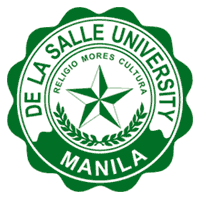Is bullying getting normalized in Philippine schools?

Sponsored by

EDCOM II-backed research projects by a team of DLSU professors and researchers seek to strengthen the implementation of the Anti- bullying Act in schools while also addressing other areas to improve the quality of basic education in the country.
It was 2013 when Republic Act No. 10627, or the Anti-bullying Act, was signed under the presidency of Benigno Aquino III. However, despite the legislative measures in place, bullying incidents continue to rise and remain a priority problem in the country. The Programme for International Student Assessment (PISA) 2018 and 2022 results have shed light on an alarming trend in the Philippines: high rates of bullying incidents among students. Is bullying getting normalized in Philippine schools?
According to the PISA 2018 report, 65% of students in the Philippines reported being bullied at least a few times a month. This percentage is significantly higher than the Organization for Economic Cooperation and Development countries’ average of 23%. Although the percentage went significantly down by 2022 because of the pandemic, this data still showcases the pervasive nature of bullying in Philippine schools and the urgent need for effective strategies to address this issue.
Partnership with EDCOM II
In June 2023, the Senate of the Philippines and De La Salle University (DLSU) signed an agreement for the Second Congressional Commission on Education or EDCOM II, a three-year comprehensive assessment and evaluation of the performance of the education sector.
University Fellow and Distinguished University Professor Dr. Allan B.I. Bernardo was tasked to oversee priority research areas, which include bullying in Philippine schools. Among the topics are: a) mapping the regions where bullying is most rampant; b) characterizing these hotspots; c) reviewing factors associated with bullying among Filipino students; d) developing policies related to addressing bullying; and e) generating proposals for a framework for a safe and supportive school environment.
Other DLSU studies for EDCOM II look into the following areas: curriculum congestion in basic education; availability of infrastructure for tech-mediated learning resources in developing foundational and digital literacy; professional development programs for Filipino teachers; career destinations of labor market outcomes for teacher education graduates; and factors that shape the research productivity of Philippine higher education institutions. Bernardo shares that among those who are part of EDCOM II are faculty members from the Br. Andrew Gonzalez FSC College of Education, College of Computer Studies (CCS), College of Liberal Arts (CLA), and School of Economics (SOE), as well as researchers from the Office of Lasallian Center for Inclusion, Diversity, and Well-Being and the Office of Counseling and Career Services.
A stride toward safer learning spaces
The percentage of bullying incidents in the country, according to Bernardo, is based on how students perceive bullying as part of the social norm. “It seemed like it was something very normal that people even just shrug it off. In a sense, that was alarming to us researchers.”
Focusing on the characteristics of the school environment, the team of Dr. Thomas Tiam-Lee of CCS used a machine-learning approach to identify a typology of schools based on the levels of bullying and related school environment variables. The results, which present the complex interplay between school environments and bullying within the Philippine context, are considered for the design of anti-bullying programs/interventions and policies related to creating safe school environments.
For his part, CLA Department of Psychology Associate Professor Dr. Rene Nob identified several predictors of bullying exposure. One of the findings showcased that bullying is more common in public schools, where there is a large number of students per teacher.
Tiam-Lee and Nob’s study noted that bullying happens most where teachers tend to be discriminating and where there is less perceived competition and a lower disciplinary climate. Adult support was also found to be an essential predictor of bullying: children with parents demonstrating lesser emotional support tend to become bullies.
The researchers have drafted an initial set of recommendations, such as injecting amendments to the Anti-bullying Act with revisions in the Implementing Rules and Regulations, mandating legislative projections, conducting a follow- through in schools, and seeking help from media on how bullying should be portrayed in popular culture.
Reflecting on the presence of bullying in schools, Bernardo notes how it has contradicted deep-rooted values in Philippine culture. “We are very sensitive to the needs of other people. It makes me think that maybe there are moments that we, Filipinos, tend to forget these values of pakikipagkapwa-tao [or] empathy to other people.”
Through their work in EDCOM II, the team expressed hope to address this problem as well as other priority areas of the Philippine education sector, highlighting the need for policymakers and various stakeholders to strengthen their collaboration.
Contact: Dr. Allan B.I. Bernardo | allan.bernardo@dlsu.edu.ph